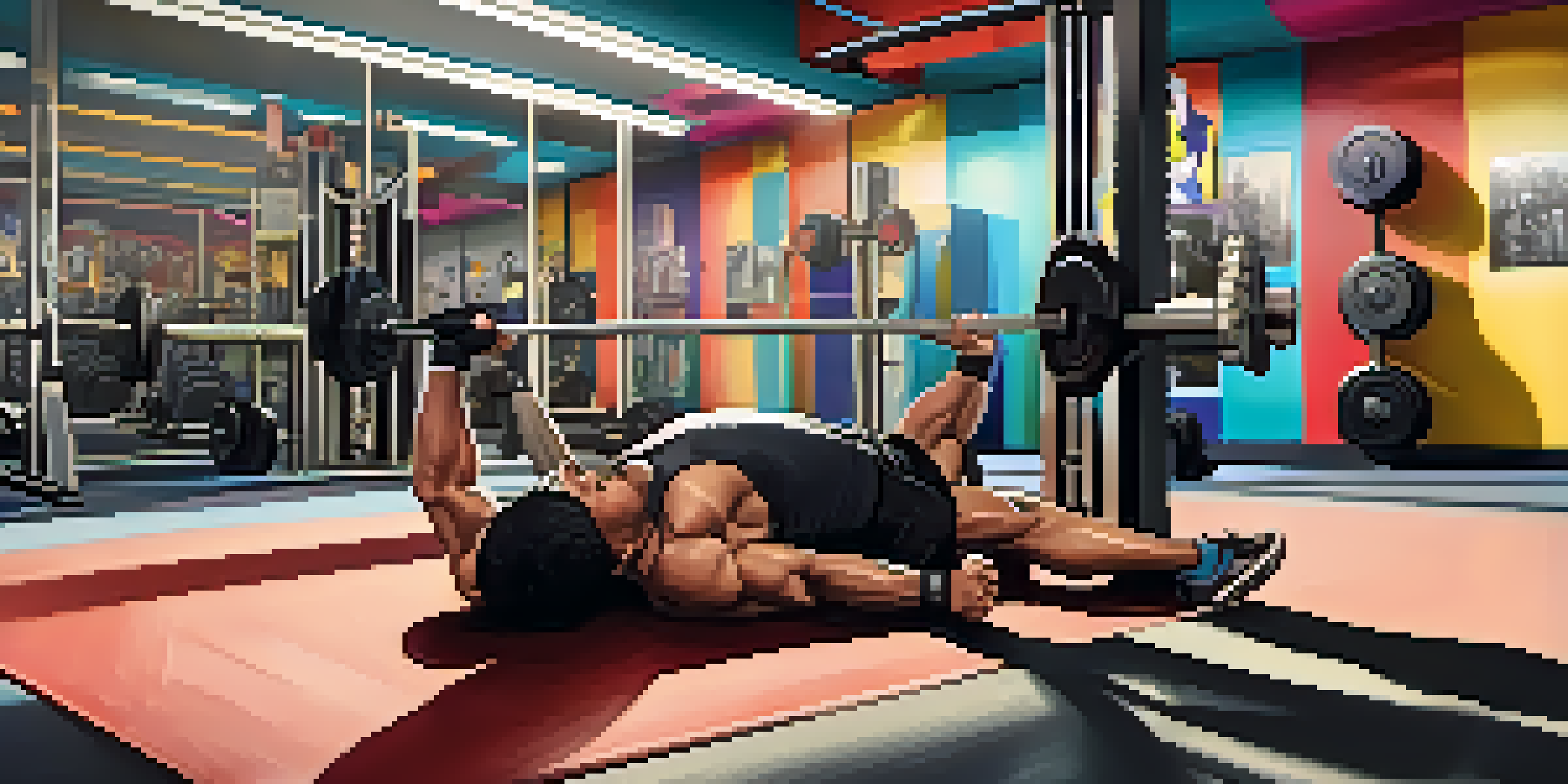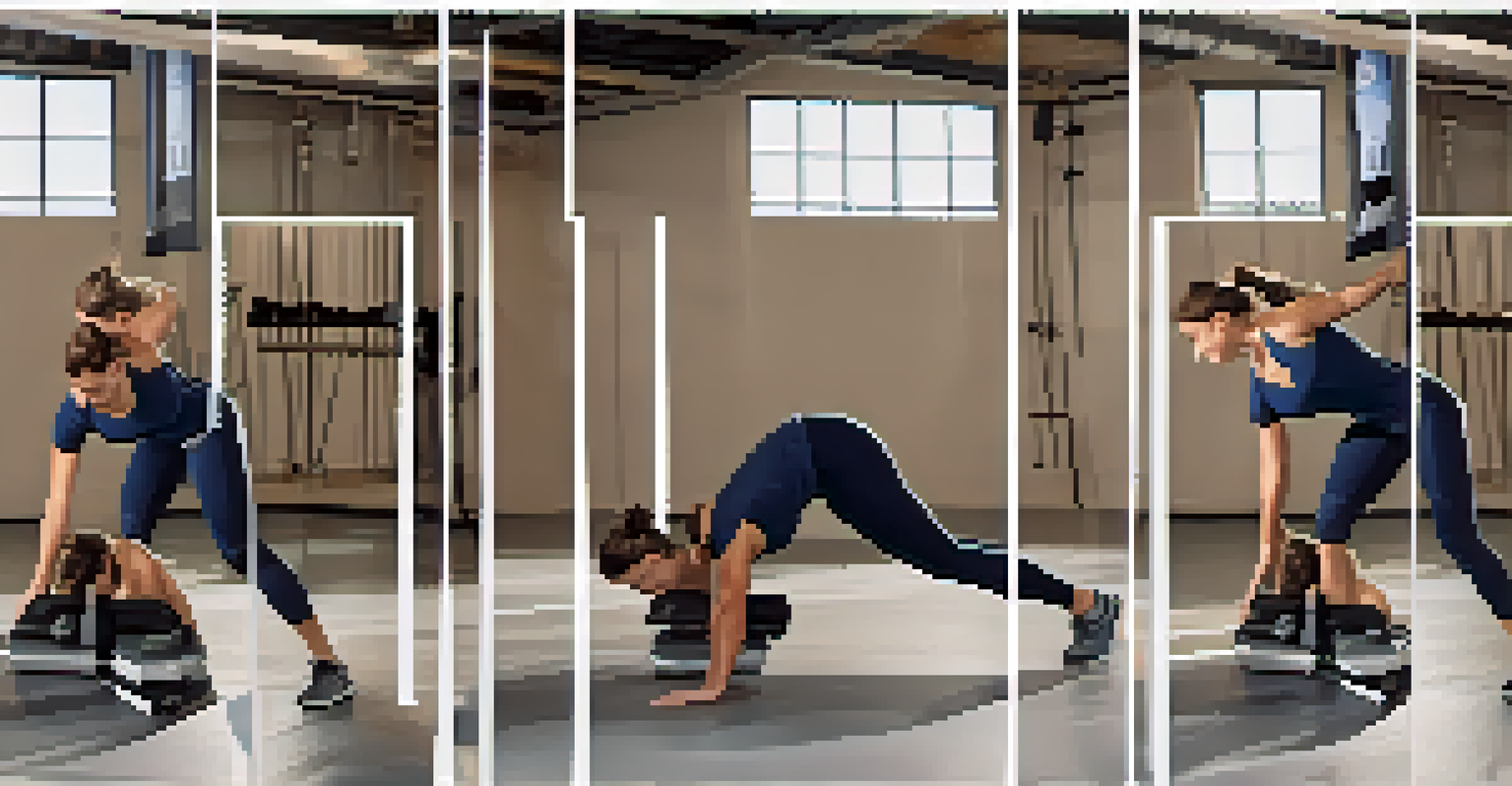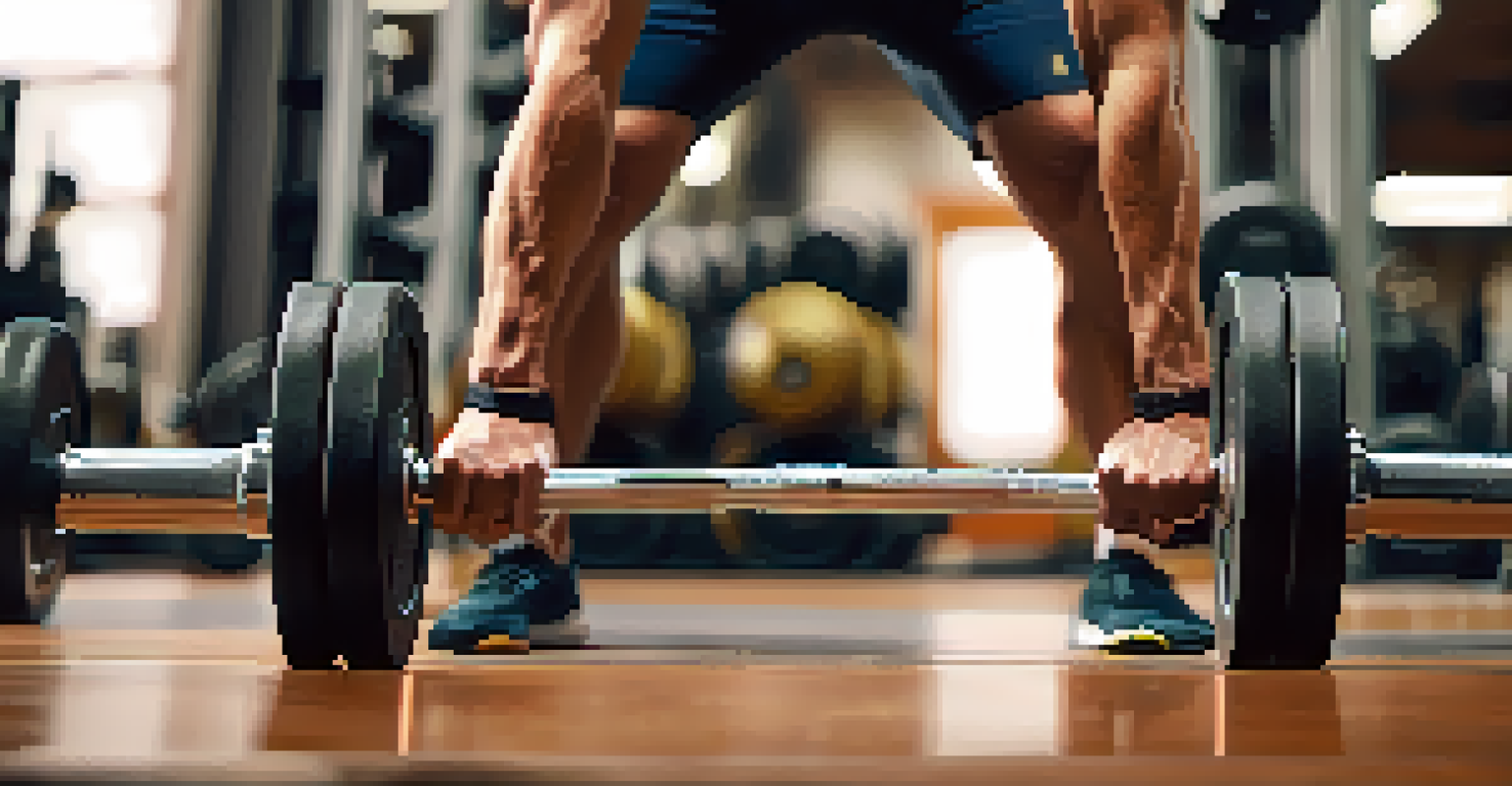Exploring Floor Press as an Alternative Bench Press Variation

What is the Floor Press? A Beginner's Overview
The floor press is a strength training exercise that targets the upper body, particularly the chest, triceps, and shoulders. Unlike the traditional bench press, where you're lying on a bench, the floor press requires you to lie on the ground. This change in position can make it an excellent alternative for those looking to modify their workout routine.
Strength does not come from physical capacity. It comes from an indomitable will.
One of the key differences is that your range of motion is limited in the floor press. When you lower the weights, your elbows touch the ground, which can help minimize shoulder strain. For many lifters, this makes the floor press a safer option, especially if they're recovering from an injury or looking to prevent one.
Additionally, the floor press can be performed with both barbells and dumbbells, offering versatility in your training. Whether you're at a gym or working out at home, you can easily incorporate this exercise into your regimen without needing specialized equipment.
Benefits of the Floor Press Compared to the Bench Press
The floor press has several advantages over the traditional bench press, particularly for those aiming to build strength. One notable benefit is how it emphasizes the triceps. By limiting your range of motion, you're forced to engage your triceps more, which can lead to better muscle development in this area.

Moreover, the floor press can help improve your bench press performance. By strengthening the muscles used in the lockout phase of the lift, athletes often find they can push heavier weights. This makes it a smart addition to any strength training program, especially for powerlifters.
Floor Press: A Safer Alternative
The floor press offers a limited range of motion, reducing shoulder strain and making it a safer option for those recovering from injuries.
Another perk is the reduced risk of injury. Since the floor press doesn’t require a spotter and limits the movement of the shoulders, it’s a lower-risk option for many lifters. This allows you to focus on building strength without the fear of dropping weights or overextending your shoulders.
How to Properly Perform the Floor Press
To perform the floor press, start by lying on your back with your knees bent and feet flat on the ground. Hold the weights above your chest with your arms extended, and make sure your wrists are straight. This setup is crucial to ensure you're in a stable position before you begin the lift.
The difference between a successful person and others is not a lack of strength, not a lack of knowledge, but rather a lack in will.
As you lower the weights, keep your elbows at about a 45-degree angle to your body. Lower the weights until your upper arms touch the floor, and then press back up to the starting position. It's essential to maintain control throughout the movement to avoid any sudden jerks that could lead to injury.
Lastly, focus on your breathing. Inhale as you lower the weights and exhale as you press them back up. Proper breathing not only helps with stability but can also enhance your performance during the lift.
Common Mistakes to Avoid When Doing the Floor Press
Even though the floor press is a straightforward exercise, beginners often make a few common mistakes. One typical error is using weights that are too heavy, which can compromise form and increase the risk of injury. It's better to start light and focus on technique before progressing to heavier weights.
Another mistake is allowing the elbows to flare out excessively during the movement. This can place unnecessary stress on your shoulders. Instead, aim to keep your elbows tucked in closer to your body to protect your joints while maximizing muscle engagement.
Strengthen Triceps with Floor Press
By emphasizing tricep engagement, the floor press can enhance overall muscle development and improve performance in the bench press.
Lastly, don’t forget about your core. Many lifters neglect to engage their core during the floor press, which can lead to instability and poor form. Keeping your core tight throughout the lift will help you maintain balance and control.
Incorporating the Floor Press into Your Workout Routine
Adding the floor press to your routine can be an excellent way to mix things up and challenge your muscles in new ways. You can incorporate it as a primary exercise in your upper body workout or as a supplementary lift after your traditional bench press. This will help target different muscle groups effectively.
Consider pairing the floor press with other complementary exercises like push-ups or overhead presses for a well-rounded upper body workout. This combination can enhance your overall strength and endurance, making your training more efficient.
As with any exercise, consistency is key. Try to include the floor press in your weekly workout schedule, aiming for one to two sessions per week. This will allow you to track your progress and gradually increase the weights as your strength improves.
Who Should Consider the Floor Press?
The floor press is a fantastic option for a variety of lifters, but it’s especially beneficial for those with shoulder issues. If you've experienced discomfort with the traditional bench press, the floor press can provide a safer alternative while still allowing you to build upper body strength.
It's also a great exercise for beginners who are just starting their strength training journey. The limited range of motion can help new lifters develop proper form without the intimidation factor of the bench press. Plus, it's an easy exercise to perform at home or in the gym.
Ideal for Various Lifters
The floor press is beneficial for beginners, those with shoulder issues, and athletes looking to boost upper body strength.
Lastly, athletes looking to enhance their performance in sports that require upper body strength, like football or basketball, will find value in the floor press. Its focus on the triceps and chest can translate well to improved pushing power in various athletic endeavors.
Conclusion: Embracing the Floor Press for Strength Gains
In conclusion, the floor press is an effective and versatile exercise that can significantly enhance your upper body strength. Whether you're a seasoned athlete or just starting your fitness journey, this alternative to the bench press offers unique benefits that cater to a wide range of lifters.
By incorporating the floor press into your routine, you’ll not only improve your strength but also reduce the risk of injury. Remember to focus on proper form and technique to maximize your results while minimizing any potential issues.

So, why not give the floor press a try? You might just discover a new favorite exercise that complements your strength training goals and keeps your workouts fresh and engaging.